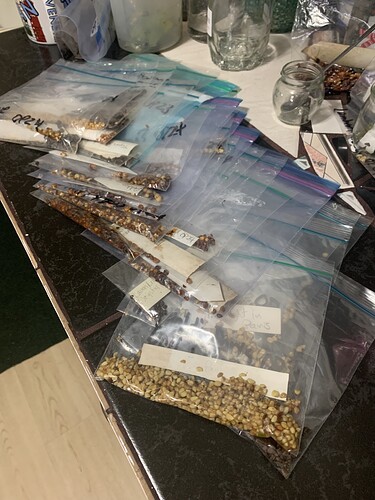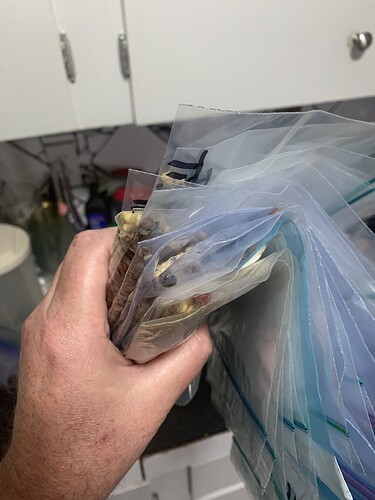Txs Roseus,
l would say my favoured method is the “reverse” of Dr. F. Svejdas’ suggested generally preferred method which adds a very long warm moist step to my front end.
Her warm and moist phase is first, at 20C? (hairs stand up on the back of my neck from my limited science test failures). She must of used something to hinder or kill fungus potential - unless naturally occurring in her media because wasn’t in my pearlite
(Think Danish and Irish “1000 year old bog men and women” for probable answer path - peat moss growth - then peat generation in acidic, anaerobic conditions.
Then also old indigenous practise of wrapping a wound in moss to prevent infection. Or wet mud ??? (add cringe factor here).
And then finally there is Otzi in the frozen Italian Alps, about 5000 years old.
But l digress from my pseudo scientific discussion of tested germination approaches and Dr Svedj method for the Explorers …)
… followed by her cool phase at 2C (19th century recommendation from UK work).
Then flat them for germination at normal temperature ( another warm moist step? ).
Mine is dry first, then into bag with pearlite and excess pore water - leave at ambient for 1-3 days (14-16 C).
Then into freezer, at just slightly below 0C for what ever duration my mood of an unscientific test moment is - usually anywhere from 60 days to 120 days - temperature freezes pearlite pore water.
Then out and thawed. Trays are ready to receive frozen and thaw seeds under lights and heat mats in basement grow room.
EDIT
Forgot method key technique detail.
The bags receiving the pearlite are filled to a volume that just covers the seeds but allows agitation to mix and separate them. Water is added to a sufficient level to flood pores but not to a “quick sand consistency.
What l deem as excess is decanted after seeds have sat in it for 1-3 days. If no free excess water the small addition made by eye until l get what l want.
After below zero stratification, receiving trays are filled with moistened standard potting mix.
In the last method revision, l pick the larger seeds out of the pearlite. Pearlite’s - white coarse texture makes it easy. For small seed the small conditioning bags ( type used for saving buttons) are essentially pour out (thawed ice water still in bag but not in excess - some sublimation and take up occurred in soaking phase and freezing period).
The pouring is on to top of potting mix surface - no mixing into soil- ( very little free water to cause excess flow disturbance to soil surface flatness) - using theory seeds now should be in contact with soil ( learned from Monty’s opinion) or as close as possible - but not buried in it. Spread a very thin coating of pearlite over top of seeds - not more than 1/4” +/ -.
This is about microscopic as l get with the technique description.
Only thought l should add it after reading Stefan comment on hot seeds drying and pearlite opinion.
Then l plead to Odin, though think it should be Loki…
END OF EDIT
Usually, but not always, due to lack of scientific discipline (more applied engineering background born to cut wasted time, energy, idle talk and money) start at ambient basement temp 14C-16C and torque heat up if germinations start, to about 18-20C.
Dud results after above, recycle back to below freezing (recycle your suggestion - do not want to burden you with my decision back to -2C not 2C rogue arm chair elements out there would brand you at -2) and repeats steps until obvious season a dud for some crosses (your suggestion - many txs).
Rarely brings a bountiful harvest of seedlings … but man what a rush when it does whether they are “opies” or crosses - doesn’t matter !

